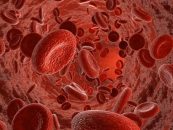Courtesy of Dr. Carlos Fava. The need for anticoagulation after transcatheter aortic valve replacement (TAVR) is over 15% according to different reports and, so far, no one has analyzed in depth whether new oral anticoagulant agents (non-vitamin K oral anticoagulants [NOACs]) result in superior benefit compared with classic vitamin K antagonists (VKAs). This study analyzed…
PCI and Anticoagulation: What is the best strategy?
Most patients with atrial fibrillation require anticoagulation to reduce the risk of stroke or systemic embolization. Today, this is achieved with the new direct oral anticoagulants, which present lower intracranial bleeding risk compared against the old vitamin K antagonists. On the other hand, approximately between 5% to 10% of patients receiving PCI also present atrial…
Antithrombotic Strategies in Atrial Fibrillation and Angioplasty
What is the most appropriate antithrombotic strategy for a patient with atrial fibrillation and coronary artery disease, particularly when admitted with acute coronary syndrome or undergoing coronary angioplasty? This is a question whose answer is still in the works and that literature is addressing dynamically. Whatever we read yesterday may already be out of date…
Safety of Combining New Anticoagulant Agents and Dual Antiplatelet Therapy
Atrial fibrillation is the most common arrhythmia and its combination with a history of acute myocardial infarction or coronary angioplasty is quite frequent. According to this study (recently published in JACC), in a real-world population, the combination of direct anticoagulant agents and dual antiplatelet therapy reduces significantly the risk of bleeding and provides similar thromboembolic…
New Anticoagulant Agents in Atrial Fibrillation in Latin American Patients, Specifically
There is limited information on the use of antithrombotic therapies and their outcomes in Latin American patients with atrial fibrillation. This stands true in almost all aspects of medicine: large multicenter randomized studies rarely include Latin American countries, and when they do, the population included is not representative of the overall population. The only exception…
Galileo: Rivaroxaban After TAVR Stopped Due to Early Event Rates
Patients undergoing transcatheter aortic valve replacement (TAVR) randomized to rivaroxaban in the GALILEO trial experienced higher risk of all-cause death, thromboembolic events, and bleeding compared with patients who received antiplatelet therapy. The GALILEO trial was halted after an early peek of events at the data from the rivaroxaban (Xarelto; Bayer/Janssen) arm. These events included higher…
TCT 2018 | OAC-ALONE: Anticoagulation Alone 1 Year After Stenting in Patients with Atrial Fibrillation
Up to now, there had been no randomized controlled trial assessing oral anticoagulation alone vs. oral anticoagulation plus antiplatelet therapy in patients with atrial fibrillation 1 year after stenting in a setting of stable coronary disease. Such was the vacuum that this work, presented at TCT 2018 and published simultaneously in Circulation, attempted to fill. This trial…
ESC 2018 | MATRIX: 1-Year Superiority of Transradial Access
Transradial access should be the access of choice in patients with acute coronary syndrome, while bivalirudin has not shown any benefit for this population. The long-term follow-up from the MATRIX (Minimizing Adverse Hemorrhagic Events by Transradial Access Site and Systemic Implementation of Angiox) trial confirms the results at 30 days: transradial access is here to stay…
ESC 2018 | MARINER: Rivaroxaban as Thromboprophylaxis after Hospitalization
For acute patients hospitalized for a clinical disease (e.g.: heart failure), indicating rivaroxaban for 6.5 weeks after discharge did not significantly reduce the risk of symptomatic venous thromboembolism. Efficacy primary end point rate was low, with 0.83% in patients treated with rivaroxaban vs 1.1% of patients receiving placebo. This work presented at ESC and…
NSAIDs and Risk of Bleeding in Patients with Atrial Fibrillation
The use of nonsteroidal anti-inflammatory drugs (NSAIDs) is very frequent and many of these medications are sold over-the-counter, but they can expose patients with atrial fibrillation using warfarin or dabigatran to potentially dangerous bleeding. Such a combination is a “perfect storm” of sorts, since atrial fibrillation is the most frequent type of arrhythmia and its…
NCDR ACTION Registry: Anticoagulated Patients with No Higher Risk of Bleeding in Emergency Procedures
Patients with a history of atrial fibrillation treated with warfarin or any of the new direct oral anticoagulants undergoing acute myocardial infarction do not present higher risk of bleeding when receiving angiography or angioplasty. In fact, this subgroup of anticoagulated patients showed lower in-hospital mortality than the control group. After analyzing 6471 patients undergoing ST elevation MI…










